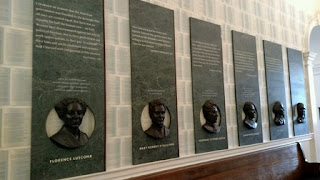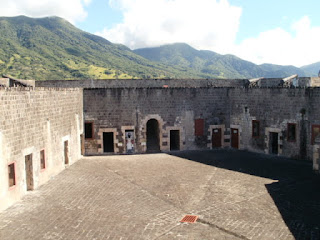Hear Us - Honoring the Contributions of Women to Public Life in Massachusetts

B oston, MA. – Hear Us is a permanent exhibit displayed inside the Massachusetts State House next to Doric Hall. The exhibit, created by artists Sheila Levrant de Bretteville and Susan Sellers was completed in October 1999. The exhibit pays tribute to the contributions of six women to public life in Massachusetts. The honorees are: Dorothea Dix, Lucy Stone, Sarah Parker Remond, Josephine St. Pierre Ruffin, Mary Kenney O’Sullivan, and Florence Luscomb. The exhibit features a marble panel for each individual. Each panel has a bronze bust of the honoree and two quotations from their speeches or writings. The exhibit is the main component of the State House Women’s Leadership Project which was initiated by the Massachusetts State Senate in 1995. The artwork for the exhibit was commissioned by the Massachusetts Foundation for the Humanities. Dorothea Dix (1802 – 1887): Her report, Memorial to the Legislature of Massachu...
